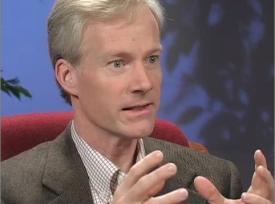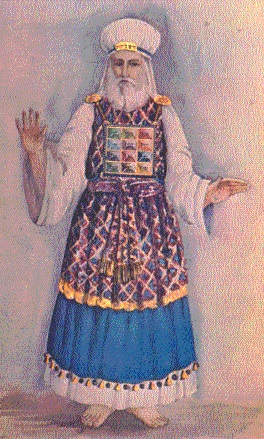 Jesus said to them, “Come and have breakfast.” (John 21:12)
Jesus said to them, “Come and have breakfast.” (John 21:12)By Neil Earle
 Jesus said to them, “Come and have breakfast.” (John 21:12)
Jesus said to them, “Come and have breakfast.” (John 21:12)A host of Christian theologians and front-rank thinkers have made the seemingly obvious assertion that there is something very strange about the Bible. Especially the New Testament and the accounts of a man who was dead coming back to appear to his followers in a series of prolonged interviews. These factual encounters convinced these men and women – against their doubts – that here was a real human being, not a ghost or a hovering spirit.
Of all these strange occurrences perhaps the strangest is found in the 21st chapter of John’s Gospel. Here a group of seven men, struggling to catch fish all night, are confronted by a stranger on the shore who tells them how to catch fish.
The location is specific – the shore of the Sea of Tiberias (Galilee) in First Century Palestine. The characters are specific – four of them are named. The time is noted – very early in the morning after a fruitless night spent trying to catch fish in a small boat.
The seven men splash ashore, one of them dragging a net holding 153 fish in it – the number another earmark of unusual authenticity. And then they see this stranger with a fish barbecue and coals and fish already warming up and offering them breakfast.
All very unusual. And all very indicative that we have to read these accounts the world calls “Gospels” with a different approach than we do our morning paper. Our orientation must be that of being ready to accept the out-of-this world. The stranger of course was the resurrected Jesus Christ appearing the third time to his disciples (another note of reliable reporting – see John 21:14). Orthodox theologians have made the point that if you ask biological questions about Jesus’ alleged virgin birth, for example, you will get biological answers that may be ingenious but will never fit all the evidence.
Similarly, if you ask physiological questions about Jesus’ resurrection body you will get mere stabs at a satisfactory answer. The trick is, as Professor Tom Torrance has said, the Bible is an astounding book because it points to things even beyond itself, it alludes to events and circumstances not easily grasped if we confine our investigations to the material realm.
Who caught the fish for the barbecue that strange morning? Who split the fish? Who lit the coals? Who gathered the wood? Is this something the living resurrected Christ would be doing? If so, how strange. It leads to other questions about the nature of Jesus’’ resurrection body. And this is where it gets very interesting for Christians and those who are not.
On page 191 of his stimulating book Jesus Ascended – The Meaning of Christ’s Continuing Incarnation, pastor Gerrit Dawson drives home a brisk summary of the true meaning of Jesus Christ’s resurrection and ascension and his present activity for us in heaven:
“Jesus Christ passed through the heavens. Against the surge of darkness, he drank the cup of obedience and went to the cross. Amidst the crackling jeers of the evil ones at his bloody defeat, he rose from the grave. The earth cracked, the tomb opened, and Christ came forth triumphant.”
 Author Gerrit Dawson
Author Gerrit DawsonThat much is known and well preached. What follows after is far less widely understood – even by Christians. Says Dawson:
“Then he returned to the Father. Still wearing our flesh, he passed through the heavens. The principalities and powers were disarmed. He led captivity captive – humanity, long captive to sin and death, rode in his train of glory as he made his way. Then, Jesus entered within the veil, into the Holy of Holies, the direct presence of God the Father. He entered, Hebrews 6:20 tells us, as a forerunner for us.
“He appears there now, wearing our humanity, on our behalf. He is the new and living way to God.”
Where is Dawson getting this last part from?
From a host of well-attested texts that were much cited by the early Christian church. Some of them are Psalm 68 and the stirring “Let God arise!” opening. Other include John 20:17, Luke 24:36-39, Philippians 3:21; 1 John 3:3, Psalm 24, Colossians 2:15, Revelation 5:6.
Since Christian teaching begins in the Old as well as the New Testament, Psalm 68’s exhortation to “Let God arise” needs pondering. Here we have a dramatic poem pushing far beyond the usual explanations of an Israelite victory parade to the Temple to commemorate a battle. The New Testament takes this original thought of a congregation ascending to the Temple Mount to give God thanks for deliverance into the spiritual heights. Psalm 68 undergirds St. Paul’s text in Ephesians 4:7-10, a soaring exposition of the neglected doctrine of the Ascension, Dawson argues. Psalm 68:18 says, “When you ascended on high you led captives in your train.” The KJV is much more picturesque “You led captivity captive,” but the thought is the same. Namely this: Christ’s resurrection was followed by his ascension and triumphant welcome in heaven. Psalm 24 also foreshadows and hints Jesus passing through the heavens victoriously to present himself and us before the Father’s throne, clean and justified, precious in God’s sight (Ephesians 4:7-13).
What? Us too?
 The High Priest's entering into the Holy of Holies annually foreshadowed Jesus in his ascension.
The High Priest's entering into the Holy of Holies annually foreshadowed Jesus in his ascension.Yes. Hebrews 6:20 shows even our very hope of a future life takes us beyond the veil, the symbolic barrier between God and humanity which Jesus penetrated by means of his bloody sacrifice. Here Jesus is called the Protodomos, the Forerunner. “Even in the ceremony on the Day of Atonement the High Priest of Israel would enter the veil of the temple carrying the names of the twelve tribes on his breastplate. This wonderfully describes Jesus taking us into the Father’s presence,” Dawson told an interviewer. Jesus went through the veil in heaven, symbolically, to act as our forerunner (Hebrews 10:19-22). By the victorious celebration that marked his heavenly ascent – foreshadowed in Psalm 24 – he turned the Roman cross, that brutal symbol of worldly power, into a symbol of God’s victory over all empires and powers.
This is the background to such statements as Colossians 2:15 where Jesus is seen to triumph over the very symbol of the brutality and cruelty of the Roman Empire – the cross. The Romans crucified 6000 survivors of the Spartacus revolt about 100 years before Jesus’ own death. Death became transformed by Jesus rising from his grave and ascended to his Father as the King of Glory. Rome could not subdue him and the grave could not hold him.
Thus, says Dawson, the ascension completes the resurrection.
Yet Jesus – obviously ascended as well as resurrected that first morning of his new life – had a body that could still operate on a real human level. When historians relate that these early Christians went to their deaths singing as if expecting a better fate, we have to ask: What vision inspired them? What was it that was implanted in their brain? For the first martyr Stephen it was a vision of the exalted but still humanly recognizable Jesus Christ seated at the Father’s right hand.
For to others it was the faithful eyewitness testimony of Jesus’ closest companion – John of Zebedee – in his 21st chapter showing how the world itself could not hold the evidence about Jesus of Nazareth, fully man yet fully God, that Stranger on the Shore in John 21.
Gerrit Dawson quotes a host of early church fathers to show that the early church understood how Jesus took his glorified human body with him (Philippians 3:20-21). He still bears the marks of slaughter upon him (Revelation 5:6) and he will for all eternity. When he returns people will “look on him whom they have pierced” (Zechariah 12:10) and it will convict many that Jesus was who he said he was – and whom his faithful servants testified that he was all along.
The technical term for all of this is “the vicarious humanity of Jesus.” Gerrit Dawson lines up quotes ranging from St. Irenaus in the 200s to the 1646 Westminster Confession to show how the Christian church has always known of the continued humanity of Jesus in his glorified body in the heavens. Irenaeus wrote: “As our species went down to death as a vanquished man, so we may ascend to life again through a victorious one.” Hippolytus (d. 236) was very blunt: “He offered himself to the Father and before this there was no flesh in heaven.” The Westminster Confession of 1646 states that “on the third day he rose from the dead with the same body in which he suffered, with which he also ascended into heaven.”
The vicarious humanity has been little preached in our era.
For Dawson and others in the Thomas Torrance school this teaching of the bodily resurrection and ascension and final presence in heaven of the Son of Man/Son of God is the best news possible. It is a call to check the worldliness and creeping heresies about Jesus becoming a higher “God-consciousness” only at his baptism or the New Age-type belief that he was more a spirit than a physical presence. “The Son of God became what we are and would not give it up. Rather then forsake us he took that humanity to heaven. United to him by the power of the Holy Spirit we share in his incarnate life at the right hand of the Father.”
At the end of a series of sermons on the ascension, Dawson asked some of his parishioners to consider the implications of all this. Here are a few of their answers:
Good comments one and all. How else could we react knowing that Jesus who was always God is now God and man and is our representative head in heaven who actively intervenes for us with the Father as we petition him as our older brother. This same Jesus was willing to bend down and gather fire-wood for a fish barbecue on the shores of Lake Galilee. John 21 shows that even after his miraculous resurrection and continued ascension to the Father he was willing to share a meal with us.
All that and more for Jesus has taken us to God within the veil; he is not ashamed to call us brethren and to present us faultless before the throne covered by his glorified body. It’s a bold statement in Colossians 3:1-4 that says our life ended at baptism – spiritually speaking (Colossians 3:3) – and we now we live in and through him to receive full sonship from the Father and all its benefits.
There is more, much more, but today let us thank God for a Living High Priest who loves us, who has humbled us mightily on our behalf to show the depths of his loving concern. Even to the point of splitting fish for a bbq after his resurrection. This is all surpassing strange but out-of-this world wonderful at the same time.